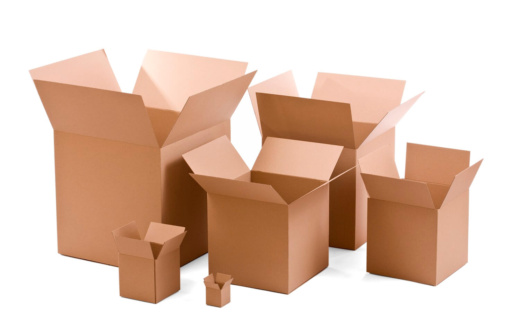Cardboard boxes play a pivotal role in the world of packaging, storage, and shipping, serving a myriad of industries and personal needs with their versatility. Available in a spectrum of sizes, from the spacious large boxes ideal for moving homes to the compact small and little ones designed for individual items, these boxes are the backbone of efficient packing and organization.
As we delve into the details of each type and their specific uses, understanding the importance of selecting the right size becomes evident.
This article aims to guide you through the various cardboard box sizes and their applications, ensuring you have the knowledge to choose wisely for your next packaging endeavor, whether it’s for an e-commerce venture, a big move, or simply tidying up your space.
Exploring Cardboard Box Sizes: From Small to Extra-Large
Cardboard boxes are an essential component of packaging, storage, and shipping across industries and personal uses. They come in various sizes to cater to different needs, ranging from large cardboard boxes suitable for moving houses to small and little ones perfect for packaging individual items.
Let’s dive into the specifics of each type and their common uses.
1. Extra-Large Boxes (24″ x 24″ x 24″)
For the biggest, bulkiest items, or when sheer volume is the game, extra-large cardboard boxes are unmatched. Ideal for industrial parts, large appliances, or commercial shipping needs, their sturdy build and capacious design ensure that even the most substantial items can be transported safely and securely.
2. Large Cardboard Boxes (24″ x 18″ x 18″)
Large cardboard boxes are the go-to choice for moving and shipping large items or consolidating multiple smaller items into one package. Their size makes them ideal for packing bulky items like electronic appliances, furniture components, and large household goods.
In addition to their utility in moving, large boxes are also commonly used in storage for keeping seasonal items, such as holiday decorations or winter clothing, safe and dust-free. Businesses frequently use these boxes for shipping bulk products or large merchandise to customers or between warehouses.
3.Medium Boxes (18″ x 14″ x 12″)
Offering a balance of space and manageability, medium-sized cardboard boxes are the versatile choice for a wide range of items. From kitchenware to office supplies, these boxes handle medium-sized goods with ease, whether for individual shipments or in bulk, establishing themselves as staples in the packaging world.
4. Small Boxes (6″ x 6″ x 6″)
Designed for the little things that matter, small cardboard boxes are perfect for shipping compact items and thoughtful gifts. Their snug size fits small products like jewelry, cosmetics, or electronics, making them a favorite for e-commerce and retail businesses aiming for efficiency in delivery.
5. Little Cardboard Boxes
Little cardboard boxes, often the smallest available, are essential for packaging individual items that require protection but are too small for larger boxes. These include items like individual beverage bottles, small electronics (such as phones or cameras), and delicate jewelry pieces. They’re particularly useful for businesses that sell small, high-value items, providing a secure way to ship products to customers.
Additionally, little boxes are frequently used for crafts and DIY projects, serving as containers for handmade gifts or decorative storage solutions.
Tailored Cardboard Box Sizes
– Flexible Sizing
Custom cardboard box sizes allow for the adaptation of dimensions to accommodate items with unique or unusual shapes. By customizing the size, you ensure a perfect fit for your products, providing optimal protection during shipping or storage.
– Custom Branding Opportunities
Custom boxes also offer a prime platform for branding efforts. By incorporating logos, designs, and branding messages, businesses can elevate their brand presence and offer customers an engaging and distinctive unboxing experience.
Selecting the Ideal Cardboard Box Size: A Guide
To ensure you pick the perfect cardboard box for your needs, take into account these key considerations:
Assess Product Size and Weight: Begin by precisely measuring your product’s dimensions and weight. This step is crucial to finding a box that fits just right, offering maximum protection while in transit.
Purpose of Packaging: Think about how the box will be used—whether for shipping, storage, or display purposes. Also, evaluate the need for additional protective measures like dividers or padding to safeguard the contents effectively.
Minimize Costs and Environmental Impact: Aim for a box size that eliminates unnecessary material use and lowers shipping expenses. Embrace eco-friendly packaging solutions to lessen your environmental footprint, making a conscious choice towards sustainability.
Applications of Corrugated Cardboard Boxes Across Industries
Corrugated cardboard boxes are widely used in various sectors due to their strength, durability, and versatility. These boxes consist of a fluted corrugated sheet and one or two flat linerboards, making them sturdy enough to protect contents during shipping and handling. Here are some key applications of corrugated cardboard boxes:
1. Shipping and Logistics: Corrugated boxes are the backbone of the shipping industry. They are designed to withstand long journeys, protect against moisture, and resist tearing and bursting, making them ideal for transporting goods worldwide.
2. E-commerce: With the rise of online shopping, corrugated cardboard boxes have become essential for safely delivering products to consumers. They can be customized to fit any item, from small gadgets to large appliances, ensuring products arrive in perfect condition.
3. Retail Packaging: Beyond shipping, these boxes are used for retail packaging, offering a cost-effective way to display and protect products on store shelves. Their surface can be printed with high-quality graphics and branding, enhancing product visibility and appeal.
4. Food and Beverage Industry: Corrugated cardboard is used for packaging fresh produce, canned goods, and beverages. It provides insulation, protecting food items from temperature variations and spoilage during transit.
5. Industrial Packaging: For heavier industrial products and machinery, double-wall or triple-wall corrugated boxes offer the required strength and durability for safe transportation and storage.
6. Pharmaceutical and Medical: In the pharmaceutical sector, corrugated boxes ensure the safe delivery of medical supplies and drugs. They can be customized with barriers and coatings to protect sensitive products from contamination and damage.
7. Sustainable Packaging Solutions: Corrugated cardboard is recyclable and made from renewable resources, making it a preferred choice for businesses looking to reduce their environmental impact. It plays a crucial role in the circular economy, as boxes can be recycled and repurposed multiple times.
In summary, corrugated cardboard boxes are a versatile packaging solution catering to a wide range of applications. Their adaptability, strength, and eco-friendly properties make them a staple in packaging, shipping, and storage across numerous industries.
In Conclusion
Cardboard boxes are essential in packaging, shipping, and storage, catering to a wide range of needs with sizes from large to small. This guide emphasizes selecting the right box size for various applications, from e-commerce to moving. It covers the spectrum from extra-large boxes for bulky items to tiny boxes for individual products, highlighting customization for unique shapes and branding opportunities.
Corrugated cardboard boxes are praised for their versatility across industries, including logistics, retail, and food. Their strength, durability, and recyclability make them a sustainable choice, essential for safe transit and reducing environmental impact.







